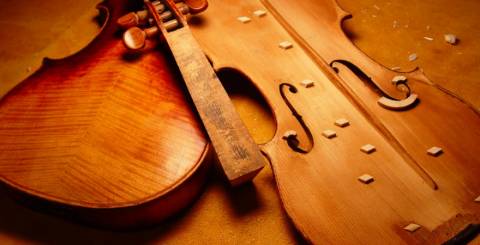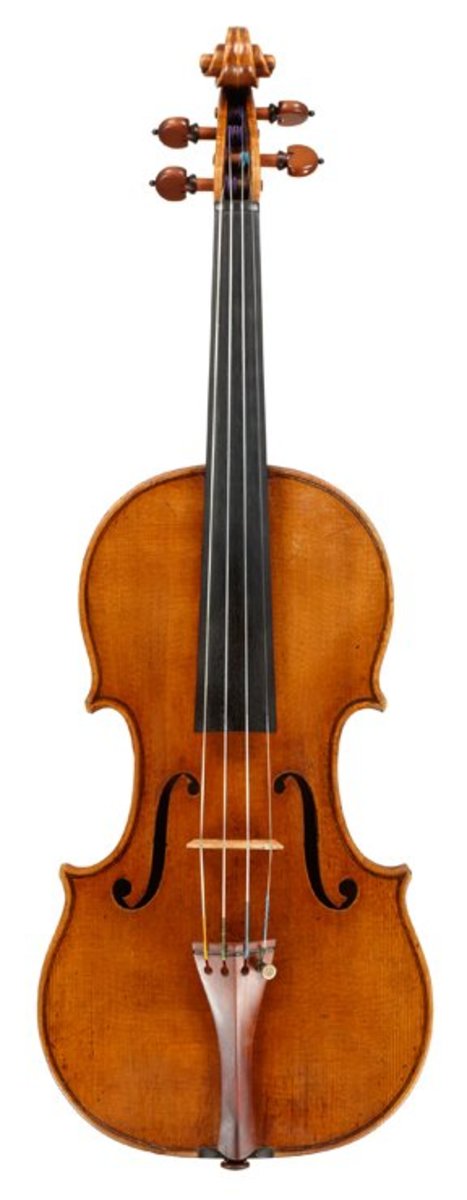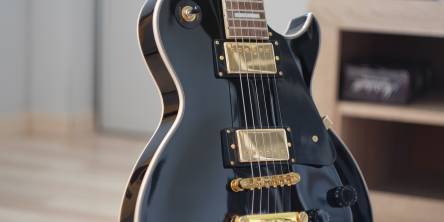The Materials of Violins 1.

Obviously, the quality of materials has great importance in violin making. This is the case for all fine arts and actually for almost all works of human hands; why would it be different in the case of violins? Only the best materials are good enough for violins. However, what is best for the sound of a violin?
Its sound is very important, so its form and the beauty are not always of primary importance. In the case of violins, we work with tonewood, so it  can easily happen that an unremarkable piece of wood with slight imperfections is better than one that looks nicer and more perfect. The occasional use of less beautiful and less perfect materials can be detected even in case of some masterpieces of Stradivari that have excellent sound. For example, significant imperfections can be found on the tracts next to the tailpiece of the lower part of the top of the great “Alard” violin. We are entitled by the end result to state that these imperfections did not compromise the quality of its sound. According to Hill, the famous 'Piatti' cello has a maple back that looks smooth with small and weak flaming, in spite of this; it can produce a deep tone. We could live without the different torsions ('twists') in the wooden structure on its top, which are the results of the humps running next to these spaces. In his early and also in his late active years, Stradivari used local maple types, which were characterized by small, dense flames. His famous, large flaming wood had an eastern origin. Naturally, it was much more expensive. This level of quality can hardly be found among older Italian violin makers, like the Amaties, who preferred cutting the back wood towards the rib (Schwarte) anyway. Generally, it cannot be stated that the most beautiful violins with wide-waving backs would surpass others; as some of the works of Stradivari also have less attractive backs, however, they have first class sounding. If, after these, we focused exclusively on the quality of their sounds, we would not judge a good tonewood, especially maple, simply on the basis of its external beauty. In this case, their final judgment will always be based on practice. If a violin has been built with excellent sound quality, it can surely be concluded whether good or really good wood was used as its tonewood.
can easily happen that an unremarkable piece of wood with slight imperfections is better than one that looks nicer and more perfect. The occasional use of less beautiful and less perfect materials can be detected even in case of some masterpieces of Stradivari that have excellent sound. For example, significant imperfections can be found on the tracts next to the tailpiece of the lower part of the top of the great “Alard” violin. We are entitled by the end result to state that these imperfections did not compromise the quality of its sound. According to Hill, the famous 'Piatti' cello has a maple back that looks smooth with small and weak flaming, in spite of this; it can produce a deep tone. We could live without the different torsions ('twists') in the wooden structure on its top, which are the results of the humps running next to these spaces. In his early and also in his late active years, Stradivari used local maple types, which were characterized by small, dense flames. His famous, large flaming wood had an eastern origin. Naturally, it was much more expensive. This level of quality can hardly be found among older Italian violin makers, like the Amaties, who preferred cutting the back wood towards the rib (Schwarte) anyway. Generally, it cannot be stated that the most beautiful violins with wide-waving backs would surpass others; as some of the works of Stradivari also have less attractive backs, however, they have first class sounding. If, after these, we focused exclusively on the quality of their sounds, we would not judge a good tonewood, especially maple, simply on the basis of its external beauty. In this case, their final judgment will always be based on practice. If a violin has been built with excellent sound quality, it can surely be concluded whether good or really good wood was used as its tonewood.
The same conclusion may not always be drawn in the opposite direction. In case of a bad sound result, the faults of the violin should mainly be searched in its way of manufacturing. In this sense, a tonewood can be good or bad as well. If the way of building is also important for having a favorable result - primarily the right way of elaborating wood thickness, thus creating a side-tone with the required characteristics -, the material will form the most important basis for creating these proportions. Thus, I consider a material with a good sound as a favorable precondition for achieving complete success; the same way as I also regard the use of good, elastic wood and not rigid varnishing evident. Should it be different in other fields of arts? Should not the best and the most durable paints be selected by a painter, as well as their proper mixture to guarantee the greatest possible success for his artworks? Would not his artworks be seriously hazarded by some of their colors being changed by time or cracked after their application? Did not Christian wood sculptors in the Middle Ages have to use the best materials for their works in order to preserve them in impeccable state until recently? You can find more information about violins and violin building on the Cremonae portal of stringed instruments.
James Cowel, October 24, 2016.
Resources:
- Adolf Heinrich König: „A Viola da gamba
- Franz Farga: Violins and violin players
- Josef & Reiner Hammerl: Erzeugung feinster Geigenlacke
Similar Articles
Learning a musical instrument is one of the most rewarding hobbies you can take on. Whether you're looking to expand your creative abilities, boost cognitive skills, or simply find a new way to unwind, playing an instrument can offer all these benefits and more
Imagine how many DJs out there today wanting the same things as you. Imagine how many musicians work hard to be recognized and well-known in their local markets and worldwide. There are many, and they are all more than you might think.
Setting up your guitar can be a daunting task because there are so many things involved in the process. For setting the truss rod of an electric guitar you need to pay proper attention.
Producing and selling music can be quite a challenge, especially if you are a newbie in music production. The pressure to sound like an experienced professional is petty strong, despite being a music producer, on a first glance, seems like an effortless job.
Music and sports are two things that have been linked with each other for years. When you enter the gym, you can instantly hear juicy beat popping out of the speakers. Isn't that true? Listening to music while exercising is so popular because it brings many impressive benefits.
The music festival these days has a lot of things under its abode. There is a lot going on at times and all of that, plus a heavy amount of people can be very overwhelming at times. These events can also put a lot of pressure on those who generally deal with anxiety, which gets amplified in large crowds.
Android phones come with already preinstalled apps for your device, for example, Google which offers you an application of their own version Google play store. This makes it suitable for finding free music download apps for your android easier now, compared to old days.
What is rock? What is pop? If all are music how they are different? This is a question that most people ask. And the answer to this lies below.
The media industry is evolving, and the current trends show that the audiences now prefer video content to audio. Music videos can enhance the reach and effect of your band on the audience. The demand for music videos has made the role of filmmakers crucial to making successful music hits.









